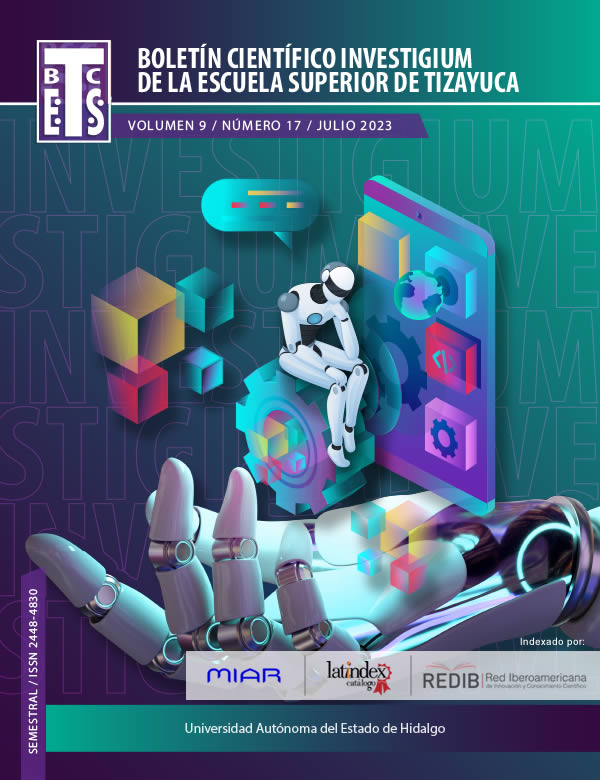Aqueduct of Padre Tembleque in the State of Hidalgo. World Heritage. Commodification or local development?
Abstract
The present investigation analyzes the current state of the Padre Tembleque Aqueduct in the municipality of Zempoala, in the State of Hidalgo, in order to identify the areas of opportunity and the deterioration that it has as a tourist area, from its postulation as Heritage. World Organization of the United Nations for Education, Science and Culture, in order to have relevant information so that it can serve as reference support to contribute in decision-making to enable local development. The work is approached from the methodological perspective of the theory of functionalism, as a current applicable to the social sciences, which requires acting on the function and utility of a social fact, focusing on a practical strategy function that generates a problem, It deals with an exploratory and descriptive approach, through a cross-sectional design. It is concluded that joining an international declaration does not guarantee the preservation and maintenance of cultural heritage, on the contrary, it is only a simulation and commodification mechanism that supports and covers the actions of certain institutions and administration of public officials.
Downloads
References
Amador, J. (2015, junio). El acueducto Tembleque… un caso de candil de la calle. Proceso, 2016, 58-62.
Boisier, S. (1999) “El desarrollo territorial a partir de la construcción de capital sinergético”, en Estudios Sociales, N°99, C.P.U., Santiago de Chile.
Bowitz, E., & Ibenholt, K. 2009. Economic impacts of cultural heritage Research and perspectives. Journal of Cultural Heritage, 10(1), 1–8. https://doi.org/10.1016/j.culher.2008.09.002.
Castillo, M., y Alfonso, N. (2017). Patrimonio cultural y turismo: un estudio comparado entre México y Colombia. Universidad Autónoma del Estado de México-Universidad Pedagógica y Tecnológica de
Colombia.
Cole, S. (2007). Beyond authenticity and commodification. Annals of Tourism Research, 34(4), http://doi.org/10.1016/j.annals.2007.05.004.
Consejo Nacional para la Cultura y las Artes (Conaculta). (2015). Fondo de Apoyo a Comunidades para la Restauración de Monumentos y Bienes Artísticos de Propiedad Federal (FOREMOBA).
Comité del Patrimonio Mundial, UNESCO, Decisions Adopted by the World Heritage Committee at its 39th Session, Decision: 39 com 8b.38, Bonn, 2015. p. 220.
Durkheim, E. (2000). Educación y sociología. (2ª. ed.) Barcelona, España: Península. Feito, R. (1999). Teorías Sociológicas de la Educacion. Recuperado http://biblioteca unives.com.mx/files 13f522
E8c3f13dc31a180fd6df-2d680b.pdf
Durkheim, E. (2001). Las reglas del método sociológico. México DF: Fondo de Cultura Económica.
El Sol de Hidalgo. Diario. https://www.elsoldeméxico.com.mx/cultura/en-descuido -el-acueducto-del-padre-tembleque-8453323.htmldel 15 de diciembre del 2015
Fainstein, S. (2000). The City Builders. Property Development in New York and London, 1980-2000, Lawrence, The University Press of Kansas.
Gallicchio, E. y Winchester, L. (2004) ‘El desarrollo local: cómo combinar gobernabilidad, desarrollo económico y capital social en el territorio’, Cuadernos del CLAEH.
Gómez, I. (2015). El acueducto del Padre Tembleque, los saberes constructivos tradicionales como método de conservación preventiva. Hereditas, (23-24), 50-61. https://revistas.inah.gob.mx/index.php/hereditas/issue/vi ew/536.
Greenwood, D. (1977). Culture by the Pound: an Anthropological Perspective on Tourism as Cultural Commoditization. En V. Smith (Ed.), Hosts and Guests: the Anthropology of Tourism (pp. 129 – 138). Blackwell Publishers.
Halewood, C., y Hannam, K. (2001). Viking heritage tourism. Authenticity and commodification. Annals of Tourism Research, 28(3), 565–580. http://doi.org/10.1016/S0160-7383(00)00076-1.
INEGI (Instituto Nacional de Estadística y Geografía) (2020) Censo de población y vivienda 2020. Ciudad de México.
Instituto Nacional de Antropología e Historia (2001). El Patrimonio de México y su valor Universal, Lista Indicativa, INAH, México.
Jiménez, C. (2002). La comercialización del patrimonio cultural. In VI Jornadas Andaluzas de la Difusión del Patrimonio Histórico (pp. 93–106). Sevilla: Junta de Andalucía. Consejería de Cultura.
Judd, D, y Fainstein S. (1999) eds., The Tourist City, New Haven, Londres, Yale University Press.
López, Á. y Marín, G. (2010). Turismo, capitalismo y producción de lo exótico: Una perspectiva crítica para el estudio de la mercantilizaci del espacio y la cultura. Relaciones. Estudios de Historia y Sociedad, XXXI (123), 219–258.
Luhmann, N. (1970). Funktion und Kausalität. In: LUHMANN, N. Soziologische Aufklärung 1: Aufsätze zur Theorie sozialer Systeme. Opladen: Westdeutscher Verlag. pp. 9-30.
Mbaiwa, J. (2011). Cultural Commodification and Tourism: the Goo-Moremi Community, Central Botswana. Tijdschrift Voor Economische En Sociale Geografie, 102(3), 290–301. http://doi.org/10.1111/j.1467-9663.2011.00664.x
Nassehi, A. Rethinking Functionalism. In: Nassehi, A. Gesellschaft der Gegenwarten. Studien zur Theorie der modernen Gesellschaft II. Frankfurt aM: Suhrkamp, 2011, pp. 45-69.
OMT (Organización Mundial del Turismo) (2019). El turismo: un fenómeno económico y social. ¿Por qué el turismo? Departamento de Prensa y Comunicaciones de la OMT. http://www.unwto.org/es/turis Consultado el 20/01/2023.
Olvera, J., y Ocaña, A. (2016). Acueducto del Padre Tembleque,Patrimonio Cultural de la Humanidad. Universidad Autónoma del Estado de México-Gobierno del Estado de México. https://ri.uaemex.mx/handle/20.500.1179 9/63308.
Plan Municipal de Desarrollo Zempoala Hidalgo (2020-2024). Disponible en https://zempoala.gob.mx/presentacion_plan.html.
Ryan, J. 2015. Intangible Cultural Heritage: The New Frontier of Destination Branding. In Ideas in Marketing: Finding the New and Polishing the Old (pp. 388–390). Cham: Springer International Publishing. https://doi.org/10.1007/978 3 319 10951 0_147.
Sectur (Secretaría de Turismo) (2020) Programa pueblos mágicos. México, D. F. Sectur. En http://gob mx/Sectur acciones y programa de pueblos mágicos. [Accesado el día 19 de enero de 2023].
Unesco (2020) Las Responsabilidades de las generaciones actuales para con las generaciones futuras: ante proyecto de declaración.
Unesco. World heritage list. [En línea]. World Heritage Centre. 2019. Disponible en: http://whc.unesco.org/en/list/.
Unesco (2010). Textos fundamentales de la Convención para la alvaguardia del Patrimonio Cultural de 2003. Organización de las Naciones Unidas para la Educación la Ciencia y la Cultura. https://unesdoc.unesco .org/images/0018/001897/189761s.pdf.
Zukin, S. 2000. Loft Living: Culture and Capital in Urban Change. ohns Hopkins Studies in Urban Affairs. Baltimore, MD: Johns Hopkins University Press.
Copyright (c) 2023 Cristina Flores Amador

This work is licensed under a Creative Commons Attribution-NonCommercial-NoDerivatives 4.0 International License.











